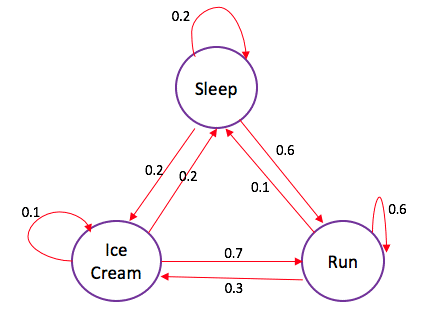Roman numerals are represented by seven different symbols: I, V, X, L, C, D and M.
Symbol Value I 1 V 5 X 10 L 50 C 100 D 500 M 1000
For example, two is written as II in Roman numeral, just two one’s added together. Twelve is written as, XII, which is simply X + II. The number twenty seven is written as XXVII, which is XX + V + II.
Roman numerals are usually written largest to smallest from left to right. However, the numeral for four is not IIII. Instead, the number four is written as IV. Because the one is before the five we subtract it making four. The same principle applies to the number nine, which is written as IX. There are six instances where subtraction is used:
Ican be placed beforeV(5) andX(10) to make 4 and 9.Xcan be placed beforeL(50) andC(100) to make 40 and 90.Ccan be placed beforeD(500) andM(1000) to make 400 and 900.
Given an integer, convert it to a roman numeral. Input is guaranteed to be within the range from 1 to 3999.
Example 1:
Input: 3 Output: "III"
Example 2:
Input: 4 Output: "IV"
Example 3:
Input: 9 Output: "IX"
Example 4:
Input: 58 Output: "LVIII" Explanation: L = 50, V = 5, III = 3.
Example 5:
Input: 1994 Output: "MCMXCIV" Explanation: M = 1000, CM = 900, XC = 90 and IV = 4. My solution: It seems that there should be a mapping between 4 and IV etc...
class Solution {
public:
string intToRoman(int num) {
unordered_map<int, string> myMap = {{1,"I"}, {4,"IV"}, {5,"V"}, {9,"IX"}, {10,"X"},
{40,"XL"}, {50,"L"}, {90,"XC"}, {100,"C"}, {400,"CD"}, {500,"D"}, {900,"CM"}, {1000,"M"}};
string res = "";
for (int& m: {1000, 900, 500, 400, 100, 90, 50, 40, 10, 9, 5, 4, 1}) { //loop starting from largest
if (num) {
for (int i = 0; i < num/m; i++) //loop all for multiple divides
res += myMap[m];
num %= m; //reduce by dividers and keep modulu
}
}
return res;
}
};
Complexity Analysis:
Time Analysis – O(n) because the size of the integer increases the size of the output word about the same proportion.
Space analysis – constant O(1) – there are only 2 vars.
